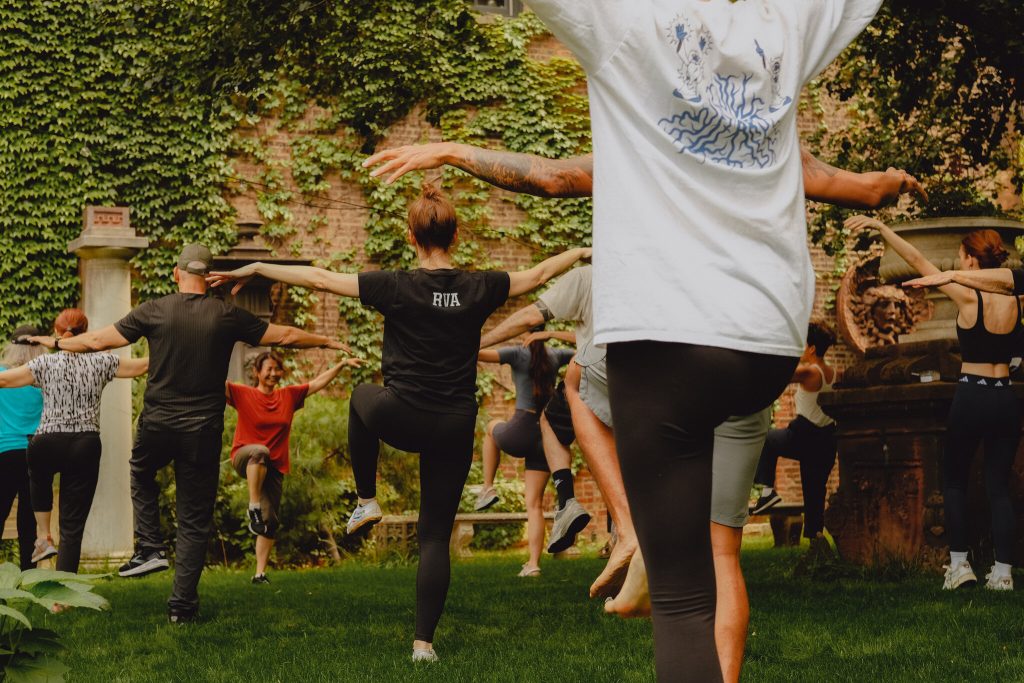Can we not think about the treadmill and barbells for a moment? Have you ever wondered how people in other cultures stay fit and active? Think about the graceful movements of Tai Chi in China and the heart-pumping intensity of Capoeira in Brazil; many unique workout practices are waiting to be explored.
Let’s walk together through the Workout Practices From Different Cultures and see the ancient practices infused with wisdom, explore workouts that connect communities, and discover hidden gems that might just become your new favorite way to move your body.

Workout Practices from Different Cultures
1. Tai Chi (China)
This slow-flowing practice combines gentle movements with deep breathing and meditation. Tai Chi promotes balance, flexibility, and inner peace, improving well-being.
This workout Practice is accessible to people of all ages and fitness levels, making it a popular choice for stress reduction and overall health.
2. Muay Thai (Thailand)
Muay Thai is a powerful kickboxing style that packs a punch, building strength, power, and endurance through kicks, punches, knees, and elbows.
This Practice requires intense focus and coordination, delivering a challenging and effective full-body workout. Beyond fitness, Muay Thai instills self-confidence, discipline, and respect for Thai culture.
3. Hula (Hawaii)
More than just graceful swaying, Hula is a profoundly spiritual practice connecting dancers to their ancestors and the natural world. Through rhythmic chanting and storytelling movements, Hula strengthens core muscles, improves balance and flexibility, and fosters cultural understanding.
4. Kendo (Japan)
This traditional swordsmanship discipline offers a rigorous workout combining mental focus, physical agility, and precise movements. Wearing protective gear, participants engage in simulated sword fights, developing strength, stamina, and strategic thinking. Kendo goes beyond physical training, teaching discipline, respect, and cultural values.
5. Capoeira (Brazil)
This energetic workout blends martial arts, dance, and acrobatics in a vibrant capoeira circle. Participants move to the rhythm of the music, using kicks, dodges, and ground movements, resulting in a fun and challenging full-body workout. Capoeira serves as a cultural expression with deep roots in West African traditions.
What are some cultural influences on physical activity?
Cultural influences on physical activity are diverse and complex, impacting everything from motivation and participation to preferred types of activity and even perceptions of health and fitness.
However, individual experiences within any culture vary. The following are some areas where culture plays a role:
1. Collectivism vs. Individualism
Cultures emphasizing collectivism (prioritizing group needs) may participate more in team sports or community-based activities. In contrast, individualistic cultures may see more solo pursuits like running or weightlifting.
2. Gender Roles
Cultural norms surrounding gender roles can significantly impact participation. Some cultures restrict specific activities based on gender, while others may encourage mixed-gender participation.
3. Religious Beliefs
Religious beliefs can influence attitudes towards physical activity, potentially affecting views on exercise clothing, gender-segregated facilities, or specific types of movement deemed inappropriate.
4. Aesthetics and Body Image
Cultural ideals of beauty and body image can impact motivations for physical activity. Some cultures focus on fitness and performance, while others prioritize slimness or specific proportions.
5. Perceptions of Health and Wellness
Cultural beliefs about health and well-being can influence motivations and preferred activities. Some cultures might value traditional practices like herbal remedies or massage, while others prioritize gym memberships or modern medical approaches.
6. Accessibility and Resources
Availability of safe spaces, affordable facilities, and culturally appropriate equipment can significantly impact participation, especially for marginalized communities.
7. Family and Social Support
Cultural emphasis on family time or social gatherings can influence how much time and energy people dedicate to individual physical activity compared to shared activities.
8. Historical and Societal Influences
Past experiences of colonialism, economic disparities, or historical trauma can create barriers to physical activity for certain groups due to lack of access or negative associations.
What is the most practiced exercise in the world?
Walking is the most practiced exercise in the world. It is a fundamental and accessible form of physical activity that individuals of all ages and fitness levels can engage in without needing special equipment or facilities. When it comes to working out, most of us keep it old-school and simple.
What is the national exercise of Japan?
Taiso is regarded as a national exercise in Japan as it holds vital cultural significance and widespread participation, earning it the title of an unofficial national exercise in many minds.
Radio Taiso, Introduced in 1928, is a 3-minute morning exercise program broadcast nationwide on NHK Radio 1, requiring no equipment.
It can be adapted to diverse fitness levels, making it accessible to everyone, from children and seniors to athletes and people with disabilities. It has enjoyed immense popularity for generations, with millions participating daily.
Which country works out the most?
Netherlands residents lead globally in physical activity, dedicating over 12 hours per week to exercise or sports.
Conclusion
Fitness isn’t just about building muscles or shedding pounds; it reflects culture, tradition, and heritage. Across the globe, diverse communities have cultivated unique workout practices that sculpt bodies and nourish the soul.
